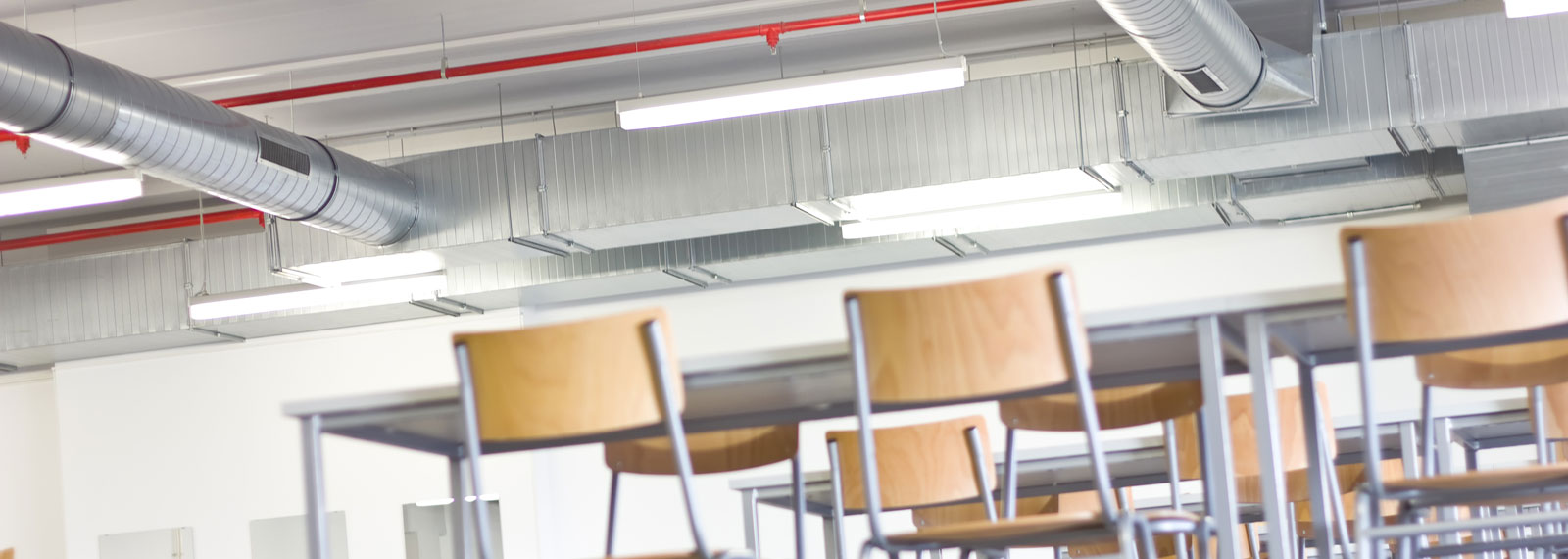Here are the answers to our most frequently asked questions. If you do not see the answer you need or would like more information, call Roger Silveira at (408) 426-0628 or email rsilveira@weneedfreshair.com.
How is carbon dioxide, or CO2, getting into classrooms?
Carbon dioxide is a byproduct of normal cell function and is removed from the human body via the lungs in the exhaled air. There is no way to keep CO2 from being present in classrooms, but proper and adequate ventilation is the best way to regulate and manage it.
What is building ventilation?
A mechanical system that supplies a space with fresh air and purges out stale air though vents and ducts throughout a building. There are varying levels of ventilation systems, but the very simple (opening windows, etc.) to the extremely complex (think of skyscrapers or sports arenas).
Without proper ventilation, carbon dioxide remains in the air, making the air stagnate and lowering the air quality.
What are the primary sources of indoor air quality problems?
Inadequate ventilation – 52%
Contamination from inside buildings – 16%
Contamination from outside buildings – 10%
Microbial or biological contamination – 5%
Contamination from building fabric – 4%
Unknown sources – 1%
Source: Environmental Protection Agency
What are volatile organic compounds, or VOCs?
Volatile organic compounds are chemical compounds that easily evaporate or convert from a solid or a liquid into a gas. Many things give off VOCs, including some types of paints, adhesives, new home furnishings and office equipment.
Concentrations of VOCs can be particularly high in newly constructed buildings or recently refurbished or renovated structures. Few VOCs are toxic, but short-term symptoms include headaches, nausea and irritation of the eyes, nose and throat.
What does HVAC stand for?
Heating, ventilation and air conditioning.
What is Title 24?
Title 24, Part 6 and Part 11 are the Building Energy Efficiency Standards of the California Building Standards Code and the California Code of Regulations. It’s also known as the Energy Efficiency Standards for Residential and Nonresidential Buildings.
The standards were created by the California Building Standards Commission in 1978 in response to a legislative mandate to reduce California's energy consumption. The standards are updated periodically by the California Energy Commission to allow consideration and possible incorporation of new energy efficiency technologies and methods.
The California Energy Code (CEC) contains energy conservation standards applicable to most residential and non-residential buildings throughout California, including schools.
Why is classroom ventilation so important?
Classrooms are some of the most densely populated spaces with an average of 30 students per 1,000 square feet. With so many occupants, the air in the room quickly becomes stale without proper ventilation.
How does ventilation help with indoor air quality (IAQ) and COVID-19?
Ventilation purges out contaminated air and replaces it with fresh air from the outside.
Are HEPA filters the best solution for improving and maintaining indoor air quality?
No, while they can be very effective at removing particulate matter and biological matter, they do not address gasses like CO2 and VOCs.
Ventilation in conjunction with filtering produces the best results. Filters should never be used to replaces proper ventilation.


